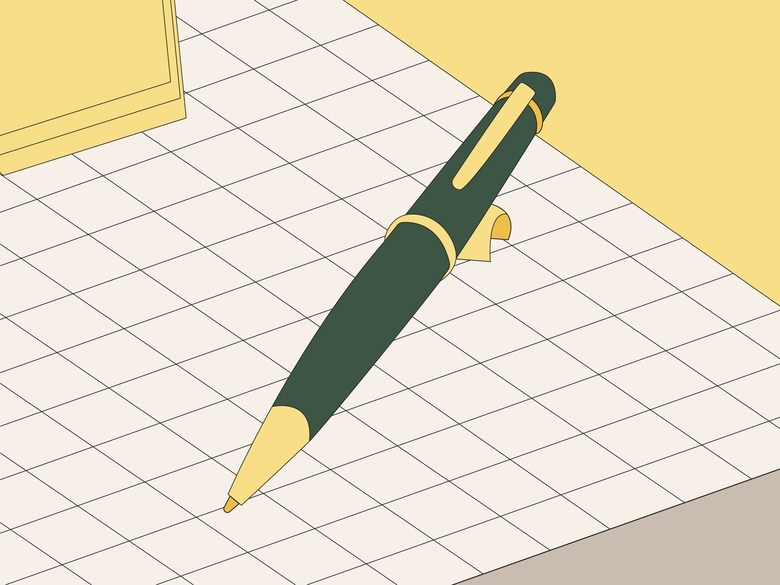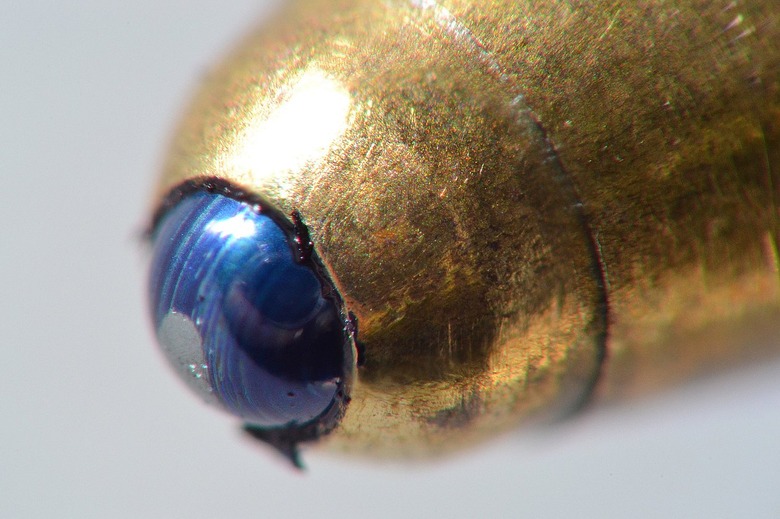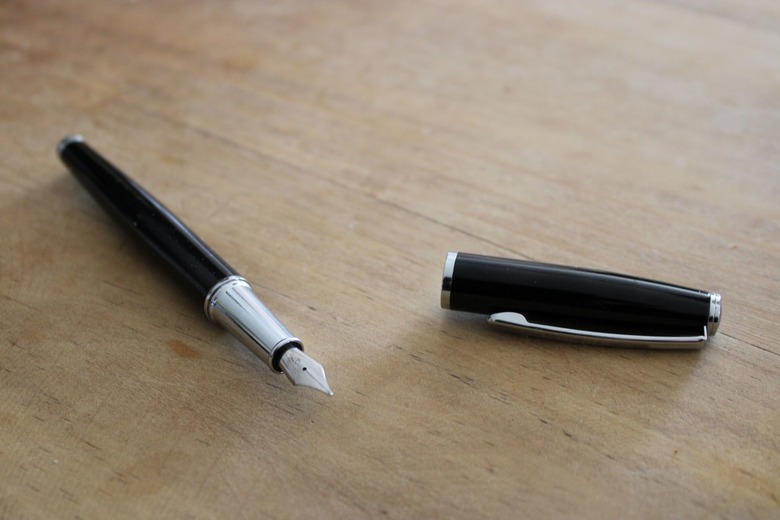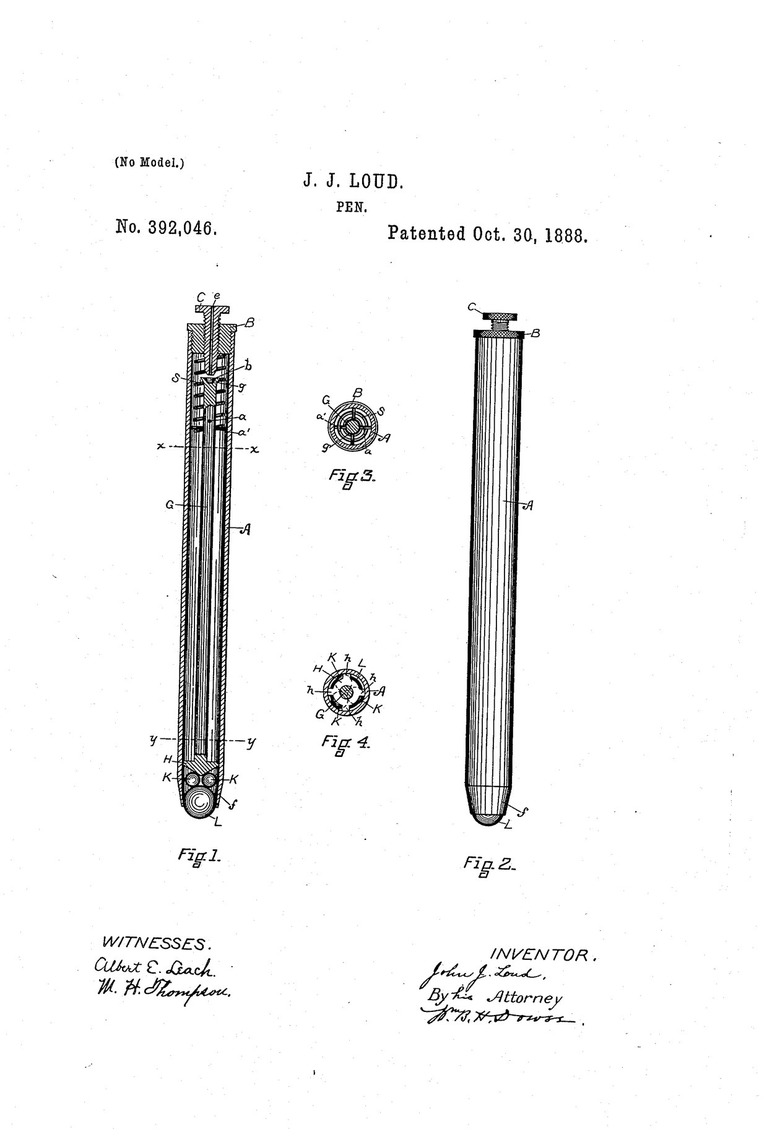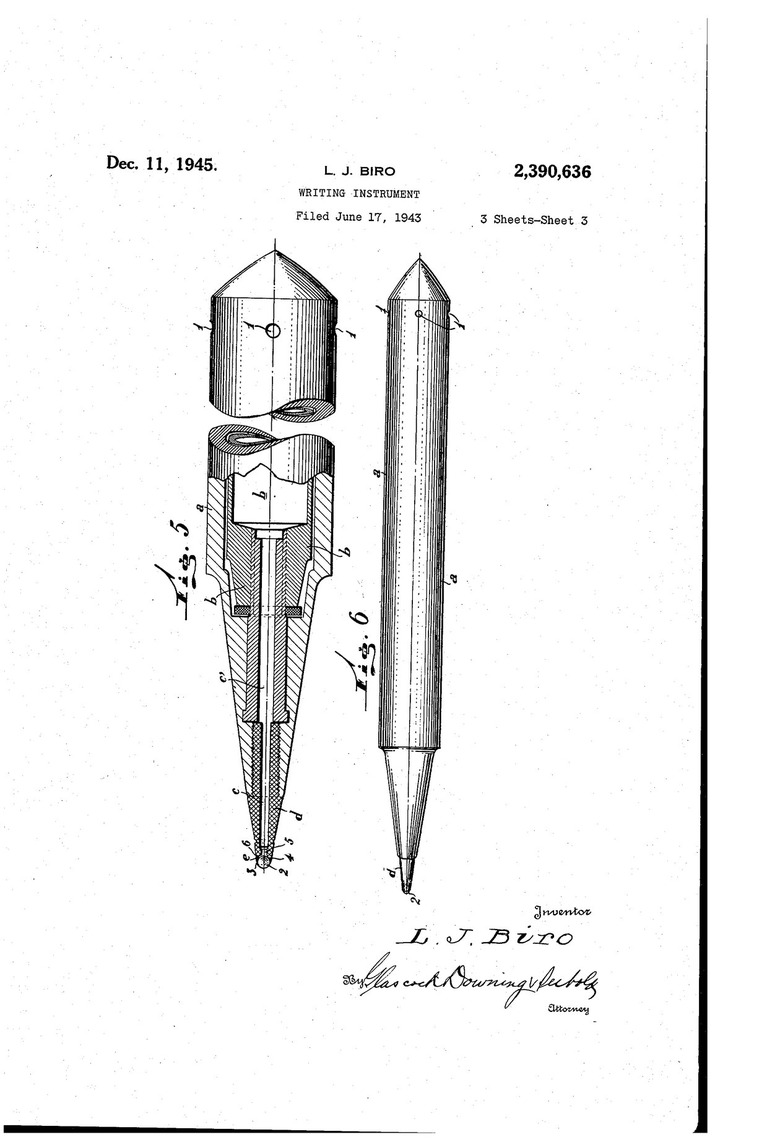The Hungarian-Argentinean Man Who Invented The Ballpoint Pen You Use Every Day
Whether or not you believe the pen is mightier than the sword, there's no doubt it's an exceptionally important tool for humanity — yes, even during the ubiquitous shift to a digital world. However, despite being around for more than 5,000 years, according to the British Library, the pen has seen relatively few transformations.
First, there was the reed pen. Then, the quill and dip pen, and later, the fountain pen. But the pen that changed the world forever, making writing easier than ever before, was the ballpoint pen.
How does a ballpoint pen work?
How does a ballpoint pen work?
Prior to the invention of the ballpoint pen, the fountain pen was the most common writing instrument. Fountain pens, however, were notoriously messy. Their ink took so long to dry that the pens' nibs (or pointed tips) would splatter ink everywhere. Plus, the cartridges that held the ink often leaked. The ballpoint pen would later resolve those issues.
Ballpoint pens have ball-and-socket tips instead of nibs. When the ball rolls across a piece of paper, it picks up ink from the reservoir inside the pen and transfers it onto that surface. Because of that ball-and-socket mechanism, ballpoint pens can use a special quick-drying ink that's more viscous than fountain pen ink.
Who invented the ballpoint pen?
Who invented the ballpoint pen?
The origin story of the ballpoint pen is two-pronged. The first person to patent a design for the ballpoint pen was John J. Loud, an American lawyer and inventor. In spite of that, Loud's ballpoint pen wasn't commercially successful, according to the BBC, as it could not write on paper. It was instead designed to write on other surfaces, like leather and wood.
The more widely known inventor of the ballpoint pen is László József Bíró (Hispanicized as Ladislao José Bíró), a Hungarian-Argentinian journalist and artist. It was Bíró's chemist brother, György, who helped develop the right kind of ink for a ballpoint pen.
When was the ballpoint pen invented? Where?
When was the ballpoint pen invented? Where?
Loud, who lived in Massachusetts, filed for and was granted his patent in 1988, but it expired in 1905. Bíró, on the other hand, invented the ballpoint pen in his native Hungary in the late 1930s. He did receive patents for the idea in several European countries starting in 1938, per the American Society of Mechanical Engineers (ASME), but the pen's commercial launch into the market was derailed by World War II.
During the war, Bíró and his brother, who were Jewish, had to flee Europe, and they headed for Argentina with a friend named Juan Jorge Meyne. The trio would continue to refine their ideas for the ballpoint pen, which they called a "birome" (a portmanteau of Bíró and Meyne), ultimately receiving a patent from Argentina in 1943 and the United States in 1945.
Though Bíró held the patent, a number of companies moved to manufacture the ballpoint pen for the mass market. Reynolds International Pen Co., for instance, launched their own ballpoint pen in 1945, in the New York department store Gimbels, per Time. That original pen sold for $12.50, or nearly $200 in today's dollars. Despite being so expensive, Gimbels sold 30,000 ballpoint pens in one week. Over time, the price came down, of course, causing ballpoint pens to become one of the most commonly used writing instruments today.
Why was the ballpoint pen invented?
Why was the ballpoint pen invented?
As a journalist, Bíró noticed that newspaper ink dried nearly instantly. He wanted to use that ink in a fountain pen to avoid the spills and smudges that commonly occurred with the instrument, but the ink was too thick, according to the National Inventors Hall of Fame. That's why Bíró developed a new pen — the ballpoint pen — and, thanks to his brother, a new quick-drying ink for the utensil.
As for Loud's ballpoint pen, that had entirely different origins. In the filing for his patent, he wrote, "My invention consists of an improved reservoir or fountain pen, especially useful, among other purposes, for marking on rough surfaces — such as wood, coarse wrapping paper, and other articles where an ordinary pen could not be used." Sadly, regular old writing paper was not one of those articles.
